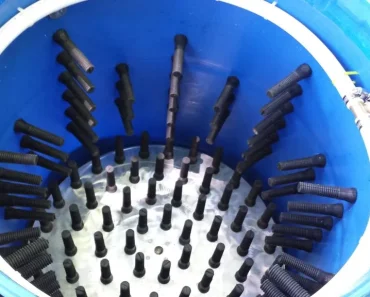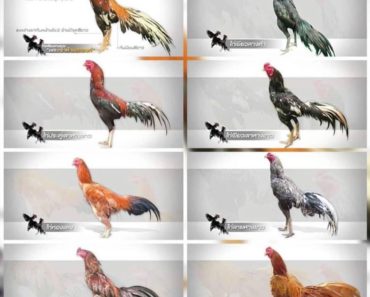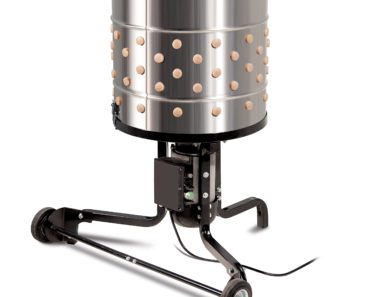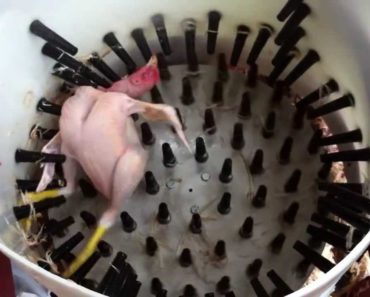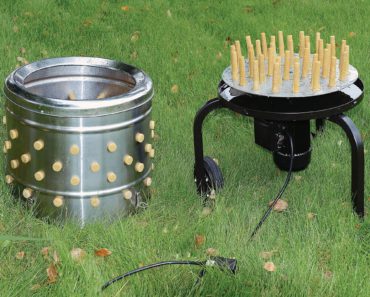Contents
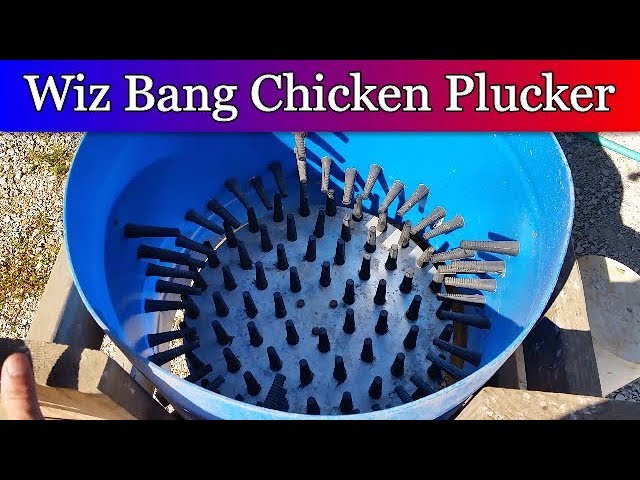
Now, we will explore the essential chicken plucker parts. From the plucker fingers to the drive belts, we will dive into each component’s role in ensuring an efficient and thorough plucking process. Join us as we unravel the secrets behind a well-functioning chicken plucker. Keep reading for all the details!
Understanding the Key Chicken Plucker Parts and Their Functions
When it comes to a chicken plucker, there are several key parts that play crucial roles in the plucking process. Each part has a specific function that contributes to efficiently removing feathers from the chicken’s body.
One important part is the rotating drum. This component is responsible for holding the chickens and rotating them during the plucking process. The rotation allows the rubber fingers or plucking discs to come into contact with the feathers, effectively removing them.
The rubber fingers are another vital part of the chicken plucker. These fingers are attached to the rotating drum and act as the primary tool for plucking the feathers. As the drum rotates, the rubber fingers create friction against the chicken’s body, causing the feathers to be pulled out.
The plucking discs are an alternative to rubber fingers and serve the same purpose. These discs are often made of rubber or plastic and are designed with small, strategically placed hooks that catch the feathers and remove them as the drum rotates.
The feather chute is the part where the feathers collected during the plucking process are expelled. It is attached to the bottom of the plucker and directs the feathers away from the chickens, ensuring a clean plucking area.
The water spray system is an additional component found in some chicken pluckers. This system helps in loosening the feathers by spraying water onto the chickens during the plucking process. The water softens the feathers, making them easier to remove.
The motor is the driving force behind the chicken plucker. It powers the rotation of the drum and ensures a continuous and efficient plucking process. The motor’s power and speed directly impact the effectiveness of the plucking operation.
Understanding these key parts and their functions is essential for anyone using or maintaining a chicken plucker. By knowing how each component contributes to the plucking process, users can ensure optimal performance and maximum feather removal efficiency.
Understanding the Key Parts of a Chicken Plucker
In this section, we will explore the essential components of a chicken plucker and their functions.
Some important parts include:
- Plucking Fingers: These rubber or plastic fingers are strategically placed in the plucking machine to remove feathers from chickens efficiently.
- Drum: The drum, also known as the barrel or tub, holds the chickens during the plucking process. It rotates while the plucking fingers do their job.
- Feather Chute: This component collects the plucked feathers and guides them out of the machine for easy disposal.
- Motor: The motor powers the machine, allowing the drum and plucking fingers to rotate at the desired speed.
Understanding these key parts will help you choose the right chicken plucker for your needs and maintain it properly for optimal performance.
Common Issues with Chicken Plucker Parts and Their Solutions
Even quality chicken pluckers can experience issues over time. Here are some common problems you may encounter:
- Worn-out Plucking Fingers: With regular use, the plucking fingers can become worn out or break. Replace them as needed to ensure efficient feather removal.
- Clogging Feather Chute: If feathers clog the feather chute, it can disrupt the plucking process. Regularly clean the chute and ensure it is clear of obstructions.
- Inefficient Motor: A weak or malfunctioning motor can result in slow or ineffective plucking. Check the motor regularly and replace it if necessary.
By addressing these common issues promptly and implementing the appropriate solutions, you can maintain the performance of your chicken plucker and extend its lifespan.
Tips for Proper Maintenance of Chicken Plucker Parts
Proper maintenance of chicken plucker parts is crucial for their longevity and optimal performance. Here are some essential tips:
- Regular Cleaning: Clean the plucking fingers and drum after each use to remove any residual feathers or debris, preventing clogging and ensuring efficient plucking.
- Lubrication: Apply lubricant to the moving parts, such as the drum’s bearings and motor, to reduce friction and prevent premature wear.
- Inspection: Regularly inspect the plucking fingers, feather chute, drum, and other components for signs of damage or wear. Replace any faulty parts immediately.
- Storage: When not in use, store your chicken plucker in a clean, dry, and protected area to prevent rust or damage.
Following these maintenance tips will help you maximize the lifespan and efficiency of your chicken plucker, ensuring smooth poultry processing operations.
FAQ
What are the essential parts needed for a chicken plucker machine?
The essential parts needed for a chicken plucker machine include:
1. Plucking Fingers: These are rubber fingers or rubber fingers attached to discs that help remove feathers from the chicken’s body.
2. Drum: The drum is the main component of the machine and is where the chicken is placed for plucking. It rotates and agitates the feathers off the chicken.
3. Motor: A powerful motor is needed to provide the necessary rotation and agitation to the drum.
4. Frame: The frame provides stability and supports the various components of the machine.
5. Feather and Water Discharge: This part collects the removed feathers and directs the water used in the plucking process.
6. Water System: A water system is required to wet the chicken and facilitate easier feather removal.
7. Control Panel: Some machines may have a control panel to adjust the speed and operation of the plucker.
8. Base and Legs: The base provides a stable foundation, and the legs ensure proper height and balance for the machine.
These are the basic parts needed for a chicken plucker machine, although there may be variations depending on the specific design and features of each machine.
Where can I find high-quality replacement parts for my chicken plucker?
You can find high-quality replacement parts for your chicken plucker at specialty poultry equipment stores or online suppliers that cater to poultry processing equipment. Some reputable online platforms include Amazon, eBay, and PoultryMan.com. Additionally, you can also reach out to the manufacturer of your chicken plucker directly to inquire about purchasing replacement parts.
How do I properly clean and maintain the parts of a chicken plucker to ensure optimal performance?
To properly clean and maintain the parts of a chicken plucker and ensure optimal performance, follow these steps:
1. Disconnect the power supply: Before cleaning or performing any maintenance on the chicken plucker, make sure to disconnect it from the power source to avoid any accidents.
2. Remove feathers and debris: After each use, remove all feathers and debris from the plucker. This can be done by hand or with a brush. Pay extra attention to hard-to-reach areas and ensure that all feathers are removed.
3. Clean the rubber fingers: The rubber fingers of the plucker are essential for effectively removing feathers from the chicken. Clean them with warm soapy water, ensuring that all dirt and residue are removed. Rinse thoroughly and let them dry before reassembling.
4. Inspect the motor: Regularly check the motor of the chicken plucker for any signs of wear or damage. If you notice anything out of the ordinary, contact a professional for assistance or replace the motor if necessary.
5. Lubricate moving parts: Apply lubricant to the moving parts of the plucker, such as bearings and gears, to reduce friction and promote smooth operation. Follow the manufacturer’s instructions regarding the type and frequency of lubrication required.
6. Check electrical connections: Inspect the electrical connections and wiring of the chicken plucker for any signs of damage or loose connections. Ensure that all connections are secure and intact before reconnecting to the power supply.
7. Store properly: When not in use, store the chicken plucker in a clean and dry environment. Cover it with a protective cover to prevent dust, dirt, and moisture from accumulating.
By following these steps regularly, you can maintain the cleanliness and functionality of your chicken plucker, ensuring optimal performance and a longer lifespan for the machine.
Understanding the different chicken plucker parts is crucial for maintaining and optimizing the performance of a plucker machine. From the fingers to the motor and everything in between, each component plays a vital role in efficiently removing feathers from poultry. By familiarizing ourselves with these parts and their functions, we can successfully troubleshoot any potential issues that may arise during operation. Whether it’s replacing damaged fingers or ensuring the motor is running smoothly, proper maintenance and care will not only extend the lifespan of the machine but also contribute to the overall quality and productivity of the plucking process. So, let’s embrace the importance of chicken plucker parts and continue to improve our knowledge and techniques in this fascinating industry.

